Eastern Region Catchment Management Program
Eastern Region Catchment Management Program
The Eastern Metropolitan Regional Council (EMRC) provides a number of services to six member Councils in Perth's Eastern Region in Western Australia. The Eastern Region Catchment Management Program is provided by EMRC to deliver a range of natural resource management projects for the environment and community to the east of Perth. The program supports seven Catchment Groups and over 130 smaller Friends Groups as well as a range of other regional-scale projects working to improve the natural environment. The program is supported by funding from Department of Biodiversity, Conservation and Attractions (DBCA) - Rivers and Estuaries Branch, the EMRC and participating councils.
The Eastern Region Catchment Management Program (ERCMP) is a successful partnership between the Shire of Mundaring, City of Swan, EMRC and the DBCA. The strength of the program has been recognised through a Premiers Award in 2001 and two National Local Government Awards, one for Natural Resource Management (NRM) and one for Innovation, in 2007 and Perth Region NRM award in 2010, State Landcare Award in 2011, National Landcare award nominee in 2012 and “Highly Commended” in the 2020 Australian Government Partnership for Landcare Awards.
The Eastern Region is unique and relies largely on the commitment of local communities to protect and enhance the quality of their natural environment. Lifestyle, conservation and water quality issues dominate the agenda, with on-ground activities being balanced between public and private property.
The team includes a Natural Environment Coordinator, two Natural Environment Officers and a Youth Environmental Education Officer.
Key activities include production of the Greenpage newsletter, Bush Skills for the Hills and Bush Skills 4 Youth workshops and close liaison with local governments, research institutions and community groups.
Management Plan - Eastern Catchment Management Plan - 2012 - 2022 - June 2012
Community Groups
Natural Environment Officers work in partnership to support a large, active and diverse community network. The network comprises of more than 1,700 volunteers contributing 30,000 volunteer hours per annum toward environmental projects. The level of community participation for these environmental restoration and landcare activities are amongst the highest in Australia.
The Shire of Mundaring and the City of Swan have a number of Friends Groups and Catchment Groups that are interested in new members. Being a member of these groups means you can learn more about bush and river restoration in a social atmosphere, with the satisfaction of knowing you have contributed to the improvement of your local environment.
If you would like to be involved or to find out more, please contact:
Eastern Region Catchment Management Program
Phone: (08) 9424 2242
Email: environment@emrc.org.au
Creating a Capable Community in NRM
In April 2017, the EMRC launched a Community Capability project to provide targeted skills development to the region's environmental volunteers, support recruitment of new volunteers and provide on ground assistance and administration assistance. The project is supported by grant funding from the Western Australian Government's State Natural Resource Management (NRM) Program and includes a dedicated Community Engagement Officer.
The program will provide added support to the existing 1,700 volunteers to produce an expanded, more engaged, capable and proactive community working together. Improved knowledge and understanding of ecosystem processes and practical ways to conserve, maintain and improve these attributes, will be boosted through the delivery of a number of Bush Skills workshops over the course of the three year project.
If you would like to find out more or be involved, please contact:
Phone: (08) 9424 2242
Email: environment@emrc.org.au
Catchment Group Meeting Dates
Catchment Groups meet bi-monthly. Click here for meeting dates and venues.
For more information relating to Catchment Groups please email environment@emrc.org.au.
Hydrocarbon Track and Trace Project -- Bellevue Light Industrial Area
Summary
The EMRC completed a Hydrocarbon Track and Trace project in September 2016. The aim of the project was to identify hydrocarbon pollutant hotspots within the drainage system in Bellevue Light Industrial Area and to prioritise sites for further investigation. The Bellevue Light Industrial Area was a priority for the track and trace project as the stormwater outlets from this area flow into the Helena River which then leads to the Swan River. Studies undertaken by Department of Water in 2009 and the EMRC in 2014 have both detected hydrocarbons within the sediment at sites in the Lower Helena River. The 2009 study also found hydrocarbons in the water column.
Hydrocarbons have the potential to cause harm to receiving environments when they are mobilised through stormwater into streams, rivers and other waterbodies. Some hydrocarbons are produced during the incomplete combustion of organic matter, motor vehicle fuel burning and asphalt manufacturing. Others are produced through mining, processing, use and disposal of petroleum and petroleum products.
The EMRC utilised Mycelx hydrocarbon adsorbent pads in the track and trace project. The pads adsorb hydrocarbons giving a visual assessment of the presence, absence and relative amount of hydrocarbon for each drain site. 35 drain sites were chosen to represent the wider drainage network and then sampled over 3 rounds. To prioritise areas for further investigation, two factors were taken into account:
- The amount of hydrocarbon represented on the pads and
- The location of the drains within the catchment
A number of sites have been highlighted for further investigation and this information has been communicated to the Environmental Health Officer implementing the Light Industry Audit Program at the City of Swan. To see the full report, please download the document below.
The EMRC would like to acknowledge the Department of Biodiversity, Conservation and Attractions -- Rivers and Estuaries Division for providing the funding for the project and City of Swan for providing technical advice.
Hydrocarbon Track and Trace Report - Bellevue Light Industrial Area
Greenpage Newsletter
The Greenpage newsletter is a landcare paper produced for the volunteer community networks and the wider community. The publication is a compilation of articles on natural resource management in Perth's eastern region.
The newsletter provides information on current issues affecting landcare, reports on work being undertaken within the region and provides updates on activities, training and funding opportunities. The newsletter is produced bi-monthly.
To view past editions and subscribe, click here.
Revegetation of priority corridors and bushland in Perth's Eastern Region
The EMRC has finalised the 20 Million Trees Program across Perth’s Eastern Region in 2018. The aim of the program was to revegetate sites on private land and local reserves in priority wildlife corridors that have threatened and endangered fauna.
Revegetation activities for 2016, 2017 and 2018 have been completed with over 68,000 seedlings planted. The sites include private properties in Brigadoon, Baskerville, Belhus, Millendon, The Lakes, Wooroloo, Chidlow and Mt Helena. Local council reserve sites include Lightning Swamp in Noranda, Neil McDougall Lake in Como and George Street Reserve in Kensington. These areas were selected based on their location within priority wildlife corridors or because they have key environmental assets that need protection or enhancement.
Many of the plant species chosen for revegetation within the City of Swan and Shire of Mundaring are suitable species for threatened black cockatoos in the region. When the revegetation matures, it will create important foraging, nesting and roosting habitat for these creatures.
Property, Planning and Conservation Seminar
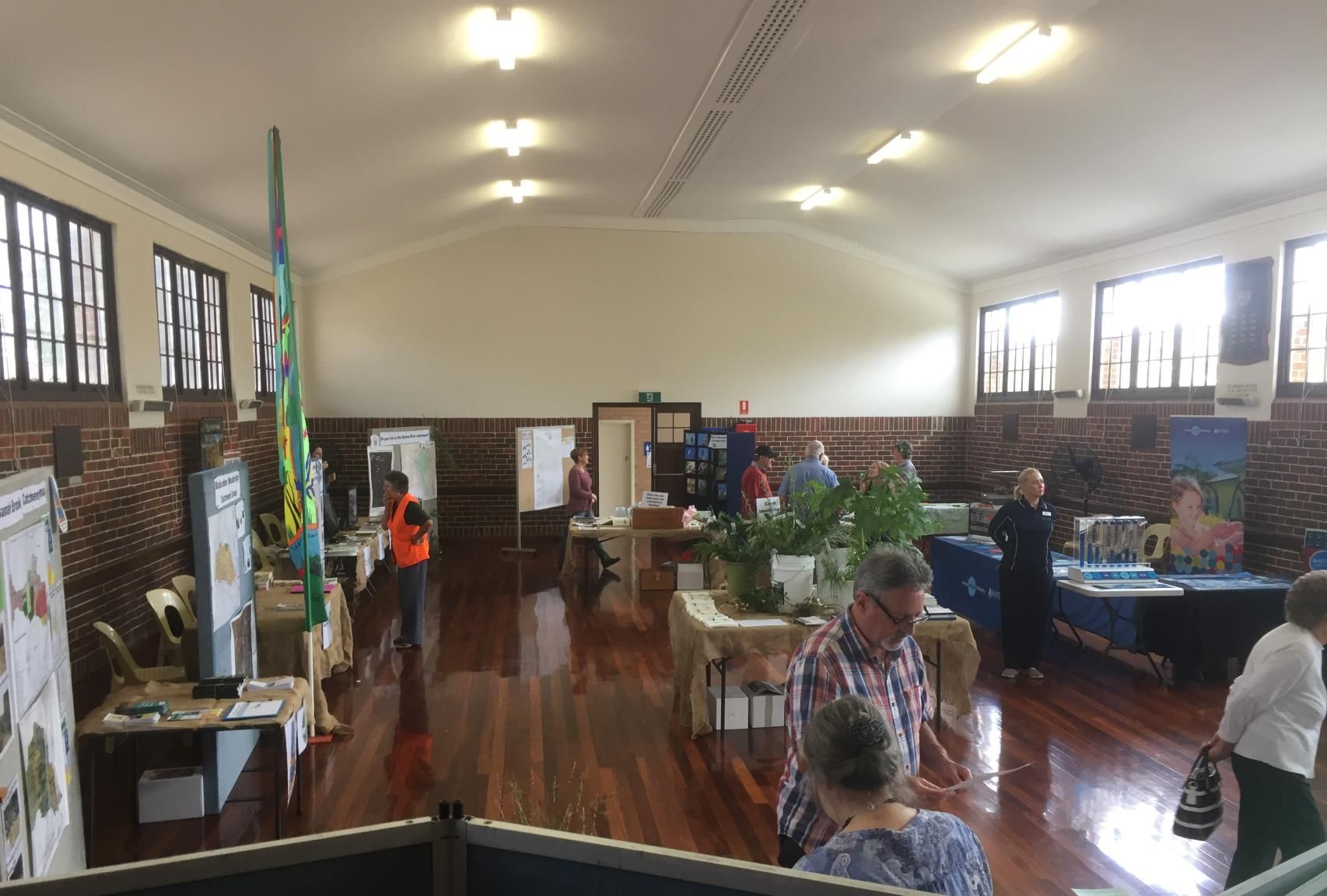
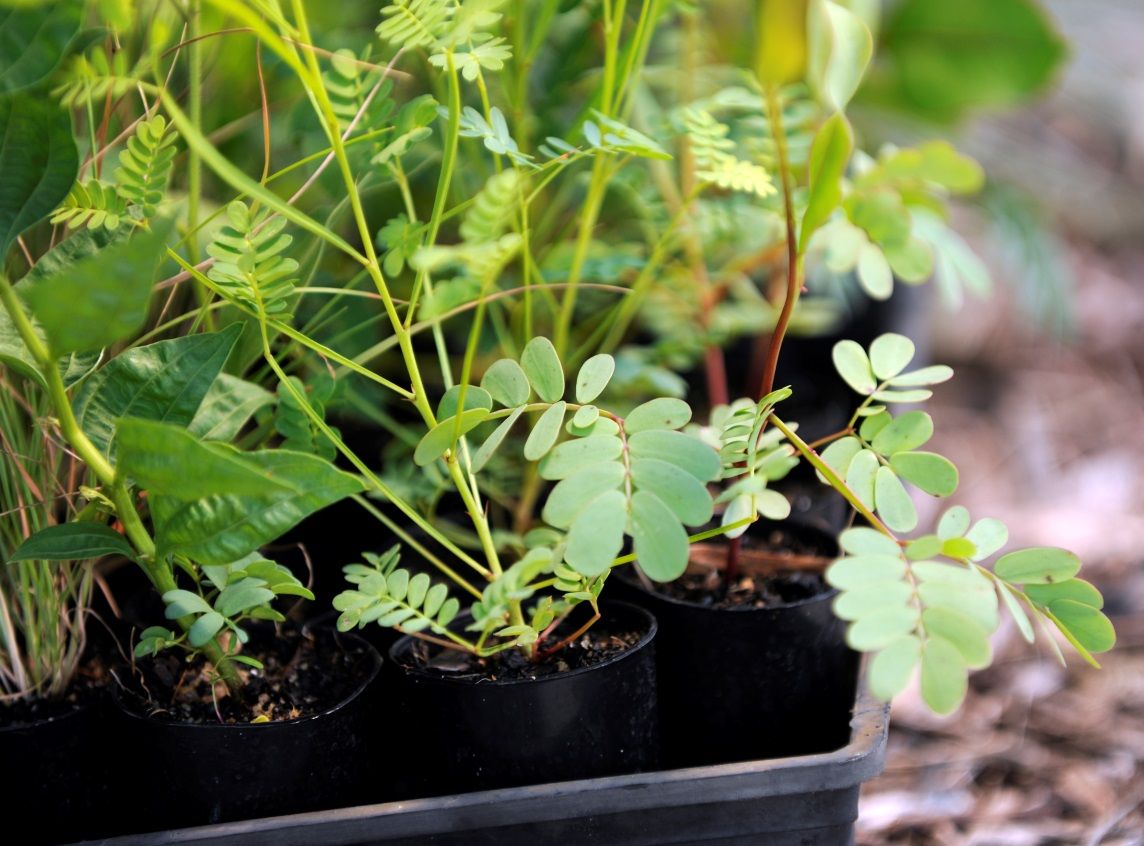
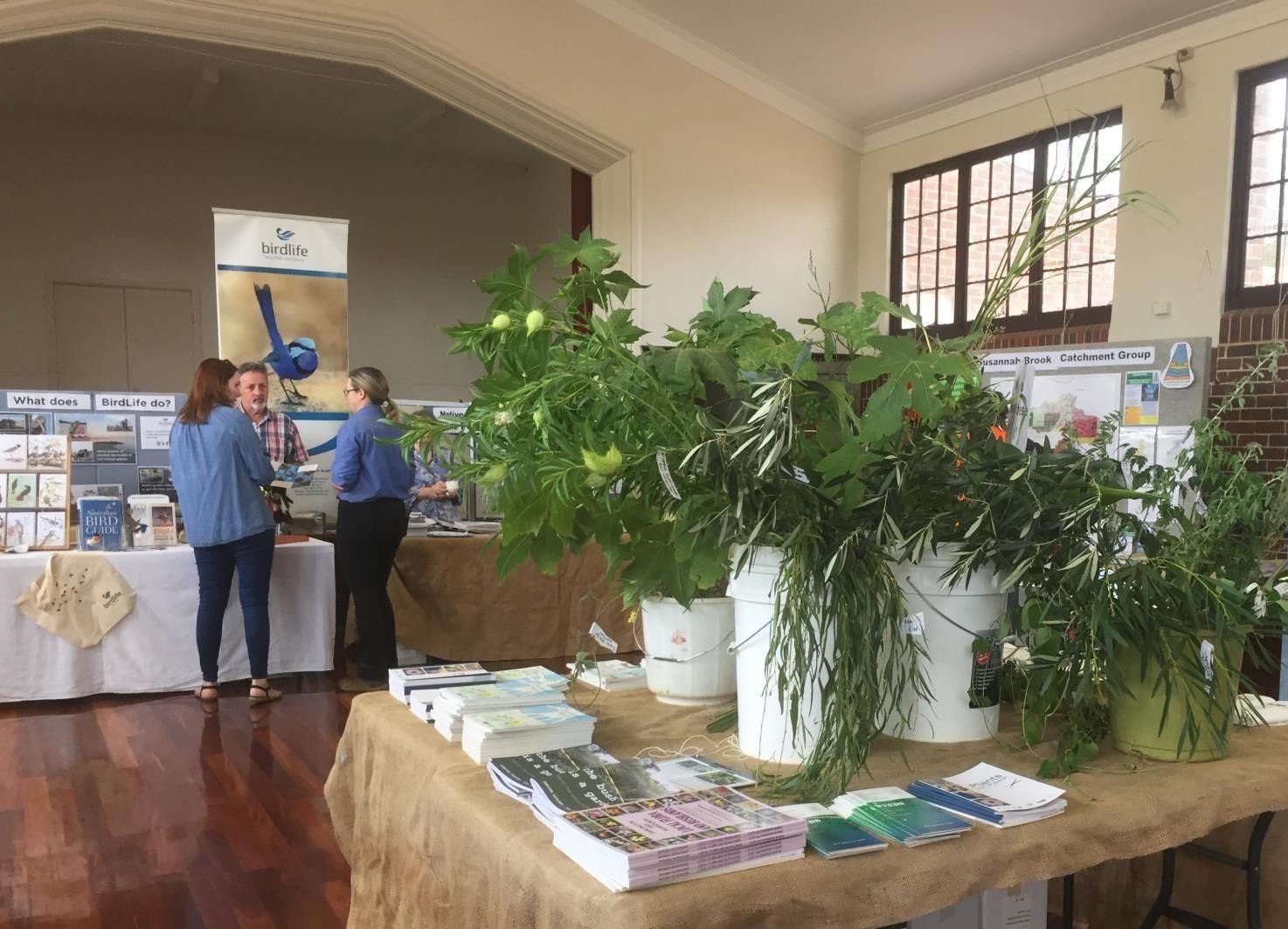
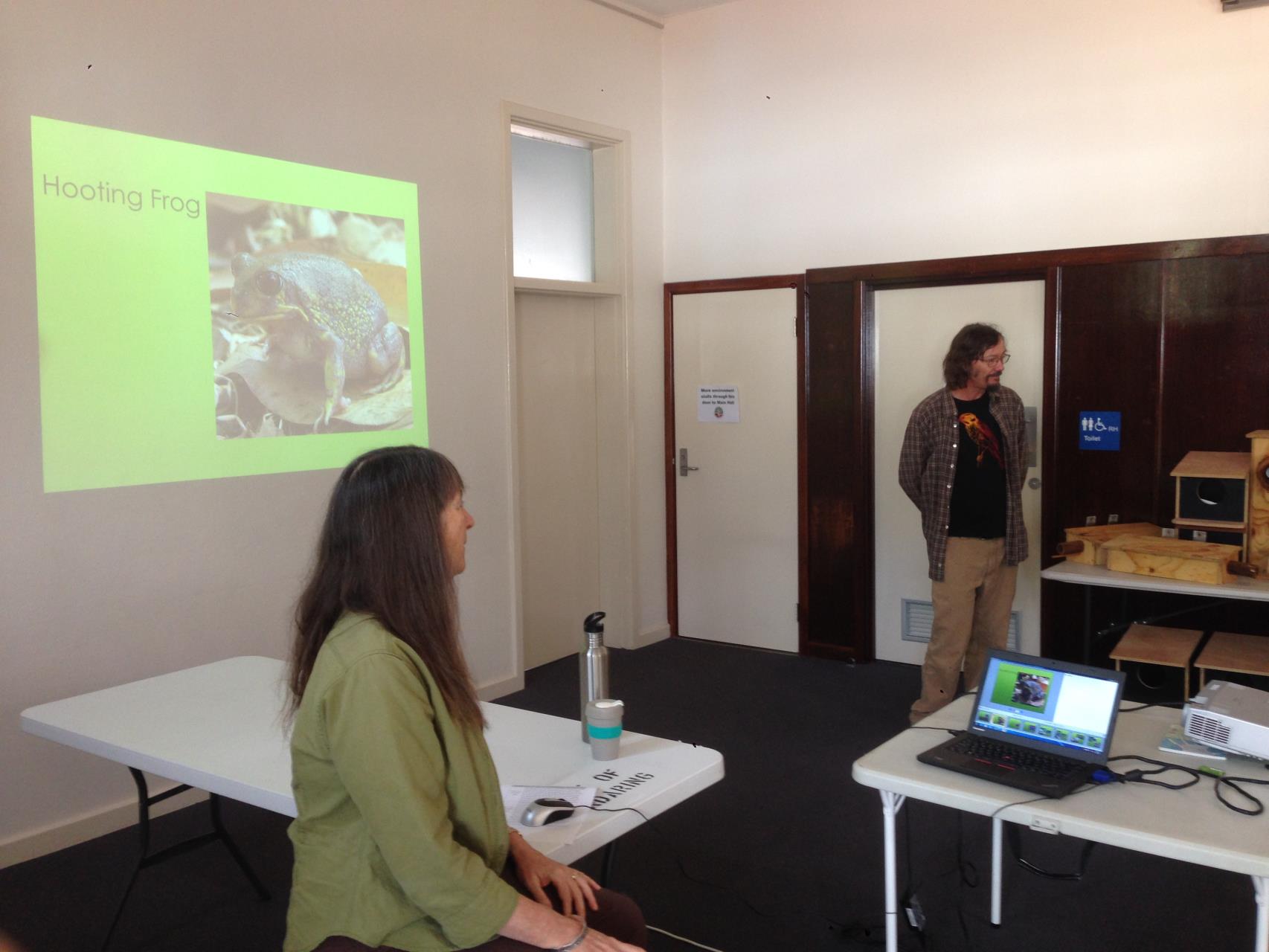
The EMRC hosted a seminar at the Blue Sky Festival on 17 March 2018, at the Lesser Hall in Mundaring. The seminar provided information and practical advice to landholders on how to preserve, enhance and protect the biodiversity values on private property as well as information about the flora and fauna in the Perth Hills, and how you can get involved to protect them for the future.
The program included interesting speakers such as Chris Ferreira, the Forever Project, Mike and Mandy Bamford, Consulting Ecologists and Professor Giles Hardy, Murdoch University. Representatives from the Shire of Mundaring and City of Swan addressed issues of bushfire compliance and fuel loads. Luke McMillan, Perth NRM, covered ecological connectivity and biodiversity hotspots relevant to Perth’s Eastern Region and Kathryn Johnson, Susannah Brook Catchment Group, spoke on the role of catchment groups and their importance to conservation of bushland. A local property owner, Jamie Falzon, covered revegetation techniques and his experience as a participant in the 20 Million Trees Programme.
Over 100 people attended the various sessions throughout the day, a testament to the relevance of the topics and the credentials of the speakers. Most of the catchment groups in the eastern region held stalls in the main hall. Water Corporation, Birdlife Australia and Bush Skills for Youth complemented the event creating an array of displays and activities at the festival. Lucky door prizes added to the attraction of the event. A variety of nesting boxes were up for grabs, with pardalotes, possum and ringneck parrot boxes on offer. A total of 12 were given away. The reactions of the winners illustrated the popularity of the prizes.
This seminar was supported by the EMRC, through funding from the Australian Government’s National Landcare Programme and the Western Australian Government’s State NRM Program.
Download some of the seminar presentations here:
For further information
If you would like more information, please contact the EMRC's Environmental team on:
Phone: (08) 9424 2242
Email: environment@emrc.org.au
Working with Weeds workshop -- a better way
Presenters from Gardening Australia, Bioscience WA and Beyond Gardens, as well as special guests from Wave Europe and Weedtechnics, discussed innovative, chemical-free weed management methods, including working with weeds sustainably and thermal weed techniques. The need for alternative weed treatments has been highlighted by the growing concern of herbicide use in the environment and the impact on biodiversity and human health.
For more information on sustainable weed management visit www.weedsnetwork.com or contact:
Phone: (08) 9424 2242
Email: environment@emrc.org.au
You can view each Speaker's presentation below:
Herbicide Use in Schools - Audrey Peric-Low
Contexts for Sustainable Weeding - David Low
Working Together with Plants - Zheljana Peric
Living With Weeds - Josh Byrne
Weeding with Nature's Tools - Mike Norman
The Ecological Effects of Herbicides and Adjuvants - Mark Bundock
Lawns to Sustainable Landscapes - Garry Heady
Where Cutting Edge Meets Sustainability - Fischer Australis Pty Ltd - Jurg Muggli
European Developments in Alternative weed Control - WAVE - Erik Bretveld
Stream Weeding - Jeremy Winer
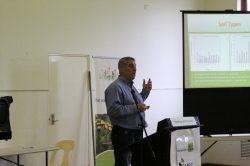
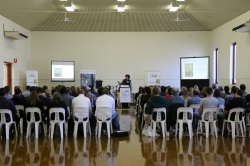
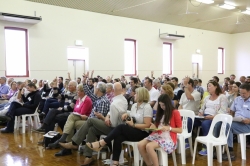
Catchment Action Plans
For effective restoration of bushland and riparian areas, there needs to be a central vision and plan to guide future projects. To address this need, the ERCMP team consulted with the following groups to create an Individual Catchment Action Plan (ICAP) for each catchment area.
- Helena River Catchment Group
- Jane Brook Catchment Group
- Blackadder Woodbridge Catchment Group
The ERCMP team consulted with the groups on their history and formation, key areas of interest and priorities for the future. Land use information, catchment information and threatening processes were also included in the plans. As a result of this consultation and collaboration, a list of actions, priorities and resources were created to guide catchment groups into the future.
We would like to acknowledge the Shire of Mundaring, City of Swan, Department of Biodiversity, Conservation and Attractions, Perth NRM and the Local Biodiversity Program for their contributions towards the plans.
The aim of the plans is to enhance biodiversity and water quality on a local and regional scale while raising awareness within the community about these important issues. The plans can be used to guide the group's activities and also as a supporting document in grant funding applications.
Please click on the link below to download each of the plans:
Helena River Catchment Group Action Plan 2012-2022
Jane Brook Catchment Group Action Plan 2012-2022
Blackadder Woodbridge Catchment Group Action Plan 2012 - 2022
Eastern Catchment Management Plan
'The Bush is a Garden' booklet
Blackadder Woodbridge Catchment Group has been working with non-chemical weed removal techniques and bushland restoration work for 15 years around the Midland area.
Written by Jennifer Catalano and Phil Cloran from the group, this booklet explains their weeding philosophy inspired by the Bradley method and outlines practical techniques with photos of how to remove weeds without the use of chemicals. This booklet encourages bush regenerators to think holistically about how weeds in the environment can form habitat for animals and how change doesn't and shouldn't happen overnight.
If you would like a hard copy please contact the EMRC via environment@emrc.org.au or (08) 9424 2216.
Click this link to download the book
(please note - the book is 15.5mb and could take some time to download)
Native Fish Fauna Monitoring
During 2010 and 2011 the EMRC received grant funding from the State government's Natural Resource Management Program o conduct fish and macro-invertebrate studies along the Helena River.
Findings of the surveys showed the Pipe Head Dam and Mundaring Weir to be influencing macro-invertebrate community structure through regulation of flow. The structures are also affecting Freshwater mussel Westralunio carteri populations by acting as barriers to gene flow between the lower and upper reaches of the river.
Sites in the main channel of the upper reach of the Helena, above the weir, support the highest diversity and abundance of native fish and crayfish and overall, areas with more large woody debris and snag habitat support the highest abundance and diversity of native species.
The lower and middle reaches of the river were found to have very low dissolved oxygen levels which is of most concern as it causes severe stress in aquatic animals and can lead to the release of heavy metals and other pollutants contained within the sediment.
Future management of the Helena River should aim to control exotic species, maintain dissolved oxygen at safe levels and restore fringing riparian and sedge communities to improve habitat quality for aquatic species.
This report recommended that seasonal water quality sampling should occur to determine if pollutants are responsible for fish and crayfish paucity within the lower and middle reaches of the river.
Below you can download a brochure of Fish in the Helena Catchment and the final report. Please note photos in the Fish of Helena Catchment brochure are by:
- M. Allen: Western Hardyhead, Freshwater Cobbler
- S. Beatty: Western Pygmy Perch
- J. Langdon: Redfin Perch
- D. Morgan: Swan River Goby, Western Minnow, Eastern Mosquitofish, Nightfish
- G. Schmida: Goldfish
Fish of the Helena River Catchment
Natural Resource Management fact sheets
EMRC Natural Resource Management fact sheets are currently under review.
For further information please contact the Administration Officer in Environmental Services:
Phone: (08) 9424 2216
Email: environment@emrc.org.au
Wildcare Helpline
The Wildcare Helpline (08 9474 9055) is a telephone referral service for sick, injured and orphaned native wildlife across WA, wholly operated by volunteers but managed by the Department of Biodiversity, Conservation and Attractions.
The Wildcare Helpline regularly receives calls from members of the public who have been advised to call by their local council or shire. While we will always assist with native wildlife, often these calls are concerned with situations which the Wildcare Helpline is not able to assist with, leading to frustration and sometimes anger due to the caller being mis-informed that we can help.
Please be advised that the Wildcare Helpline provides a service for members of the public who find sick, injured or orphaned native wildlife only.
The Wildcare Helpline CAN:
- offer advice on sick, injured, orphaned or displaced native wildlife
- refer callers to a wider network of experts for assistance, including volunteer wildlife rehabilitators and reptile relocators.
The Wildcare Helpline CANNOT:
- attend rescues
- assist with stray or nuisance animals caused by domestic issues
- assist with sick or injured non-native or domestic animals (including, but not limited to, dogs, cats, rabbits, horses, cows etc) - Contact the RSPCA instead - 1300 CRUELTY (1300 278 3589)
- remove carcasses from private or shire/council-managed land
- assist with non-native or pest species – report these to local Department of Primary Industries and Regional Development offices www.agric.wa.gov.au/office-locations
More information on the Wildcare Helpline, including first aid for wildlife advice and a list of wildlife rehabilitation centre contacts, can be found on the Parks and Wildlife website at www.dpaw.wa.gov.au/about-us/contact-us/wildcare-helpline
As they are a volunteer helpline with limited resources, Wildcare Helpline would appreciate only those calls related to sick, injured and orphaned native wildlife be referred to them. In 2013-14, the helpline received over 10,000 calls.
For current volunteer opportunities: www.dpaw.wa.gov.au/get-involved/volunteering-opportunities